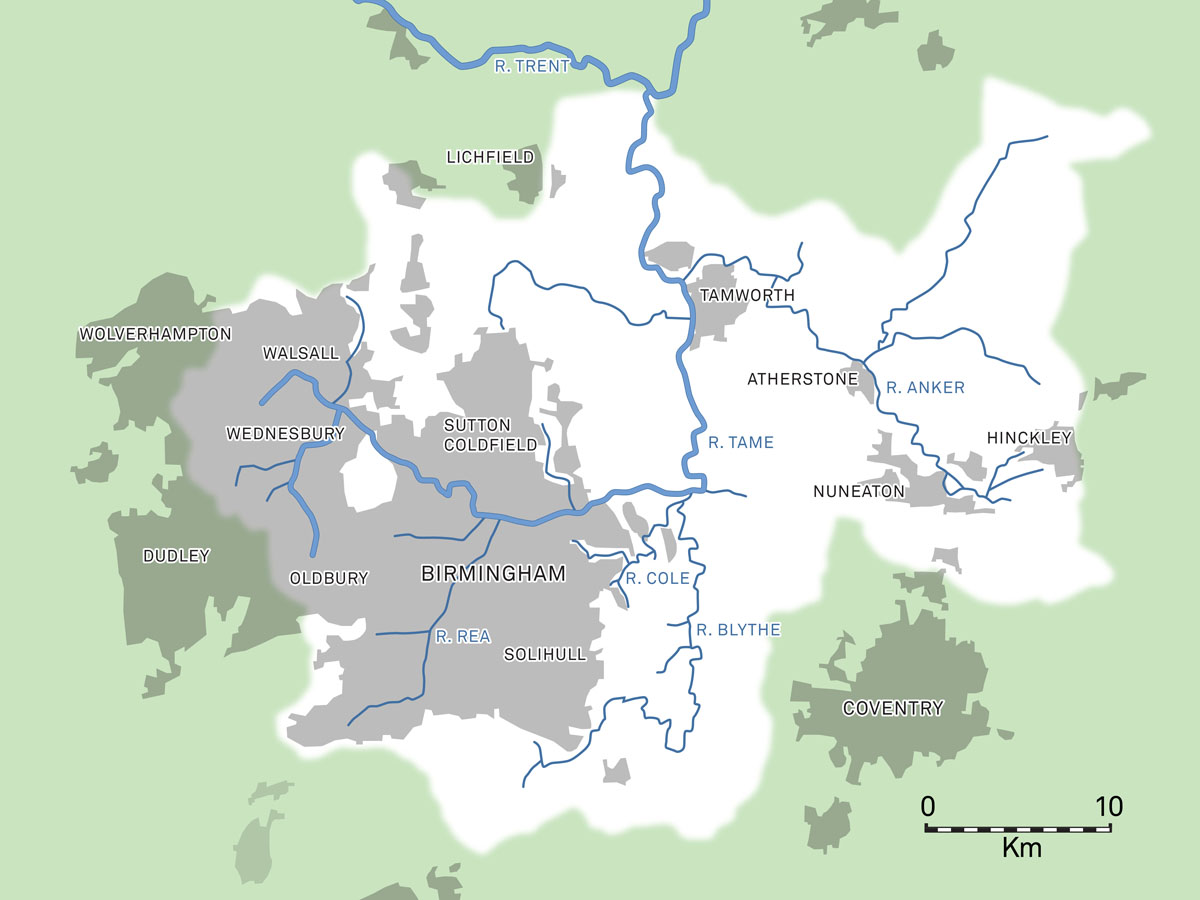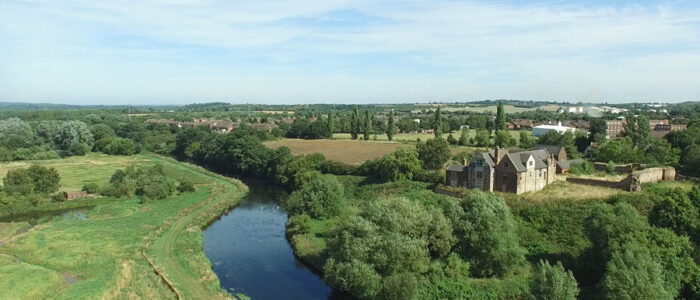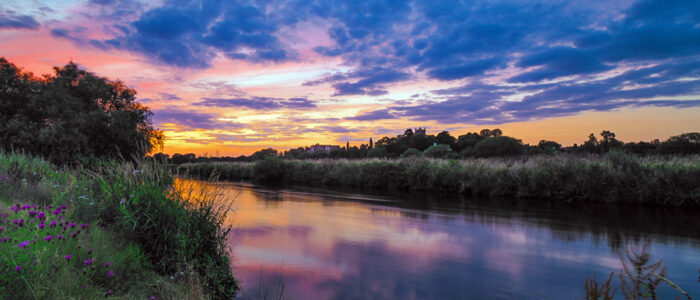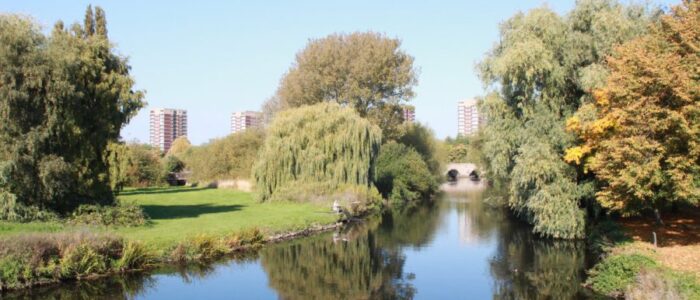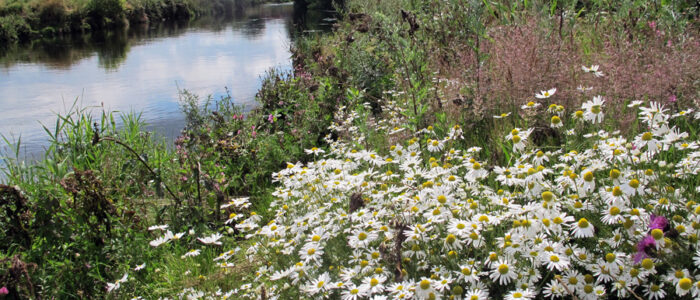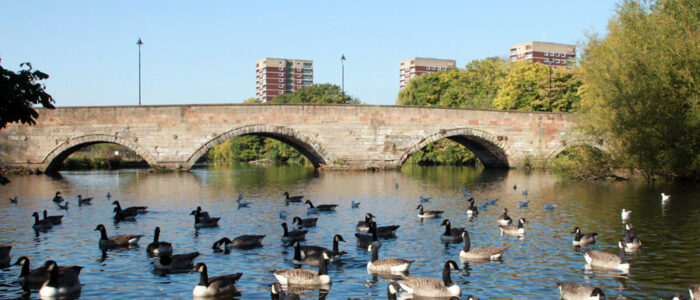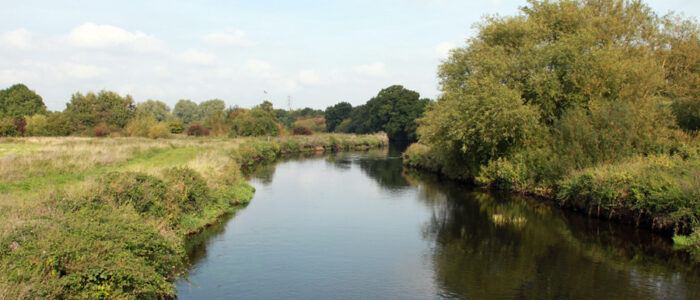Drinking water
Birmingham’s drinking water is supplied under gravity from the reservoirs in the Elan Valley in Mid Wales. This feat of engineering took place at the turn of the 20th Century and altered the hydrological cycles of the Humber and Severn river basins. Rainwater falling on the Elan Valley landscape no longer made its natural way south into the River Severn and out to the Bristol Channel, but instead, found itself diverted eastwards to Birmingham – eventually making its way (as urban runoff and sewage discharge from Minworth Sewage Treatment Works) into the River Tame, and eventually out into the North Sea via the Humber Estuary.
This additional discharge into the River Tame has changed the hydrology of the river. Small tidal-like processes can be observed on the river within the scheme area as rain falls on the conurbation of Birmingham, and as the population wakes up each morning and begins consuming water.
Main tributaries
After Minworth Sewage Treatment Works, the River Tame flows through Water Orton and is joined by the River Blythe SSSI, having itself just been joined by the River Cole.
The River Cole runs from Birmingham through Coleshill, and the River Blythe runs through the more rural landscape of Arden from the other side of Packington Park. There is a strong influence of riverine vegetation with lines of willow pollards and poplars defining the course of the rivers. The floodplain opens out where the three rivers meet near Hams Hall, with a large number of pools, mostly the result of former sand and gravel extraction.
There are historic mill and water works buildings and modern small scale works and mineral extraction set against the open and heavily- urbanised backdrop of pylons and the E.ON- owned Hams Hall Distribution Park.
The River Tame flows north through Kingsbury and on to Tamworth, where it is joined by the River Anker from the east. After its confluence with the Anker, the River Tame continues its journey north-west out of the scheme area and further north towards the River Trent.

